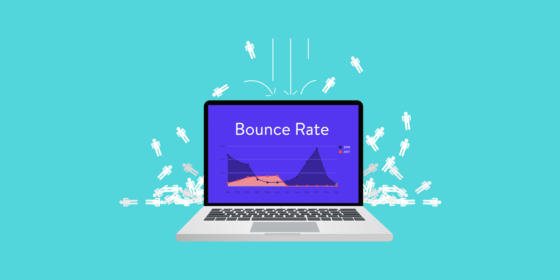Bounce Rate must be one of the most misunderstood concepts in Search Engine Optimization (SEO). At first glance, the bounce rate sounds terrible: yes it may not mean good to your website, but there is still a second side of the coin. There has been debate over time regarding the relevance of Google analytics bounce rates.
What is a bounce rate? It is the measure in percentage, of the people visiting your site then leave without doing much on the particular website. The act of leaving is what is regarded as a “bounce.” The bounce rate typically measures the time a visitor spends on your site.
The measure has for a long time been used to determine the effectiveness of a website. A visitor staying a bit longer at your place can be translated to the visitor being interested or impressed by your hospitality, right? The same goes for a website and the amount of time a visitor spends viewing the content available.
At which instances do bounce rates occur?
There are a couple of reasons that can make your Google rank tracker register a high percentage of bounces occurring on your website. However, there is no reason to be dazed. Some instances may not be necessarily a result of your site being of poor quality. It is vital to note that bounce rates do not merely occur when a visitor goes to Google, types a few letters, and then get results only to click and open a page then immediately leave. The following will give you an insight into what might be happening.
- Take this, for instance; a user clicks on a Wiki site then a friend shows up with waffles. His/her attention immediately deviates and closes the browser. Since the user had not visited any other page on the website that counts as a bounce. Does not mean your website is redundant right?
- What if a user opens your site, leaves the window open and goes to attend to other stuff? It still counts as a bounce since the user has no second point of reference, which is unfair if you are on the receiving end of Google analytics.
- The content might have been beneficial to a user but still, count as a bounce. How many times have you opened a favorite recipe website and left a recipe open throughout your cooking session? Well, that might have as well as earned the website a bounce.
- What if you get what you are looking for with just a single click? The website deserves to be awarded for being efficient and helpful to the user. However, it will still count as a bounce
- It is for the mentioned reasons that Google does not hold bounce rates against any webmasters. Bounce rates have been termed as an undependable way of analyzing quantity. With a bounce rate, there are two sides to the same coin. It can mean that the website is appealing to the right traffic and they are finding it useful, and their needs are met on the first click. On the other hand, it may mean that the traffic created by the website is of the wrong audience who more than often leaves the page unsatisfied.
Does the bounce rate affect SEO?
Does the bounce rate have any impact on SEO? The answer is yes. In as much as not all bounce rate is negative, it will be problematic most of the time. Note that Google analytics have a method of tracking the number of particular search results is selected before users proceed to other search results.
Your website can end up being negatively ranked due to a high bounce rate. The likely conclusion is that you are giving the users a poor experience: especially if the bounce rate is supported by evidence of several users clicking on several other links just after visiting your website.
What is meant by poor experience, is that your keywords are irrelevant to the content, your website’s interface is not user-friendly, or your content is insufficient.
That said, it is essential to diagnose the triggers behind your website’s high bounce rate and fix them. Note that sometimes, the content and keywords are not to blame: technical issues also cause problems that result in a bounce. To know more about a visit to the Digital Marketing Agency.















